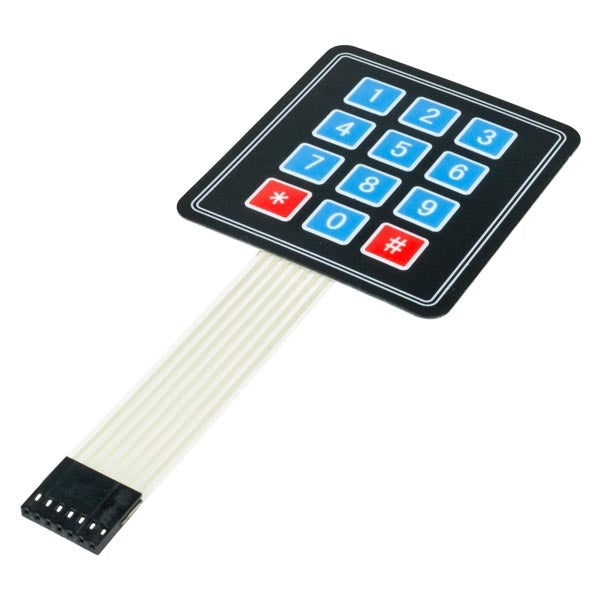The Role of Membrane Switches in Enhancing Device Functionality
The Role of Membrane Switches in Enhancing Device Functionality
Blog Article
Understanding Membrane Layer Switches: The Trick to Trusted and resilient Controls

What Are Membrane Layer Switches?
Membrane switches are an advanced remedy in the world of user interface innovation, integrating capability and layout seamlessly. These gadgets function as a user interface in between customers and digital systems, incorporating several components into a compact layout. Usually created from adaptable, slim layers of products, membrane layer buttons are made to react to touch, making it possible for users to interact with machinery and electronic devices effectively.
The primary elements of a membrane layer button consist of a published circuit layer, visuals overlay, and a spacer layer that stops unexpected activation. The visuals overlay can be personalized to show brand identity or user choices, boosting aesthetics while making certain use. Membrane layer buttons are typically utilized in various applications, consisting of clinical gadgets, consumer electronics, and commercial devices, owing to their toughness and resistance to environmental elements such as moisture and dirt.
One of the key benefits of membrane layer switches is their capacity to withstand deterioration, making them optimal for high-traffic atmospheres. In addition, they are light-weight and need marginal space, enabling ingenious designs in item advancement. Overall, membrane layer changes represent a sensible and effective option for modern digital interfaces, weding technology with user-centric layout principles.
Just How Membrane Switches Over Work
The procedure of membrane changes joints on a simple yet efficient device that converts user input into digital signals. When a user presses the switch, the top layer flaws, permitting a conductive element in the circuit layer to make contact with an equivalent conductive pad on the bottom of the graphic overlay.
The design of membrane buttons can differ, yet they frequently integrate domes or responsive components to provide feedback to the individual, boosting the total experience - membrane switch. The materials utilized in membrane buttons, such as polyester or polycarbonate, add to their longevity and resistance to environmental elements, including moisture and dirt. Moreover, the printed circuits are generally encapsulated, which secures them from damage with time.
Advantages of Membrane Layer Buttons

In addition, membrane switches are known for their sturdiness. Created from durable products, they are immune to dirt, wetness, and physical wear, which substantially expands their life-span contrasted to traditional mechanical buttons. This resilience makes them especially appropriate for high-traffic atmospheres and applications needing durability.
One more considerable benefit is the simplicity of cleaning and maintenance. The smooth surface of membrane switches over decreases investigate this site dirt buildup and is usually unsusceptible spills, making them ideal for settings that call for constant sanitization.
In addition, membrane layer switches provide a streamlined account, bring about a thinner layout that can be incorporated into various devices without including mass. This function not only enhances the visual charm but also adds to a much more ergonomic product design.
Applications of Membrane Layer Buttons
Flexible and user-friendly, membrane switches locate applications across a large range of sectors, consisting of clinical gadgets, consumer electronic devices, and commercial equipment. In the clinical field, these buttons are important to gadgets such as analysis devices, client surveillance systems, and infusion pumps, where reliability and convenience of cleaning are critical. Their capability to preserve and withstand extreme environments capability makes them optimal for such applications.

In consumer electronic devices, membrane switches are made use of in products like microwaves, washing equipments, and remote controls - membrane switch. Their streamlined design enables instinctive user interfaces, improving the total user experience while supplying durability and resistance to tear and put on
Industrial devices additionally benefits from membrane switches, specifically in control panels for equipment and automation systems. These switches provide protection versus dirt and dampness, making sure regular efficiency in challenging environments. Moreover, their personalized attributes allow producers to tailor them to certain functional demands, enhancing efficiency and functionality.
Choosing the Right Membrane Switch
When selecting a membrane switch, it is vital to think about various elements that influence performance and suitability for details applications. The key factors to consider consist of environmental conditions, tactile feedback, durability, and layout requirements.
First, analyze the operating setting; switches exposed to moisture, chemicals, or severe temperature levels need particular products to ensure durability and performance. Next off, examine the requirement for tactile responses. Relying on individual interaction, some applications might profit from a tactile response to validate activation, while others may prefer a non-tactile layout for visual reasons.
Durability is an additional vital element; membrane browse this site layer switches must be created to endure frequent usage, impacts, and abrasion. Make certain the chosen button can withstand the expected lifecycle, specifically in high-usage scenarios.

Final Thought
In conclusion, membrane layer switches over serve as necessary components in the style of reliable and resilient control systems throughout numerous industries. The adaptability of membrane layer switches enables for customized remedies that meet particular functional demands, reinforcing their importance in contemporary innovation.
Membrane layer switches represent an important navigate here facet of modern interface design, blending performance with durability in numerous applications.Membrane layer switches are a sophisticated solution in the realm of individual interface innovation, integrating capability and layout flawlessly. Normally constructed from versatile, thin layers of products, membrane buttons are made to respond to touch, making it possible for users to communicate with equipment and electronic devices effectively.
The design of membrane switches can vary, but they typically integrate domes or tactile elements to provide feedback to the user, boosting the total experience.In verdict, membrane layer changes serve as important components in the design of reliable and sturdy control systems throughout different markets.
Report this page